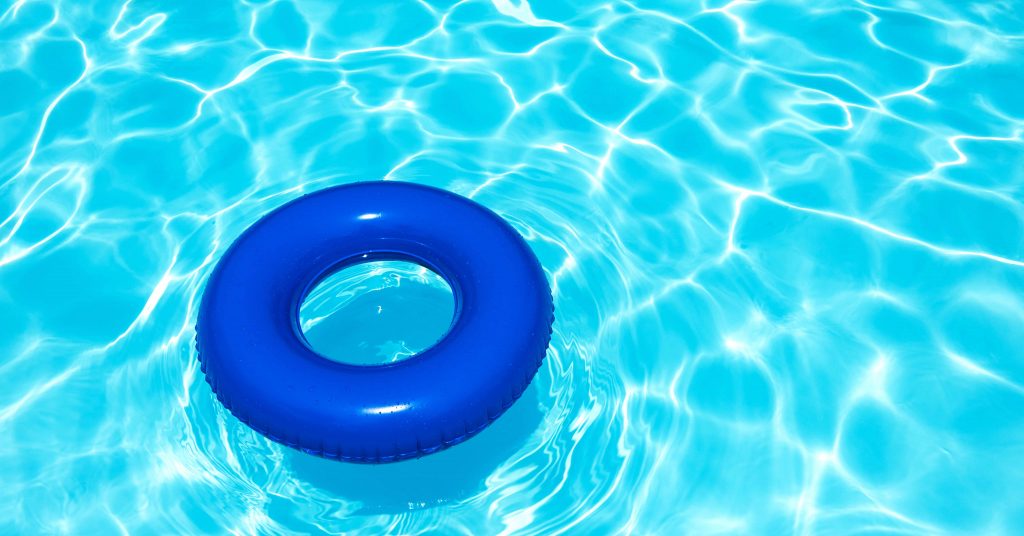Reading time: 3:45 –
In our opinion, there’s nothing more unhygienic than swimming in a bacteria-ridden pool! To avoid this germaphobe’s nightmare, pool owners must maintain the correct sanitiser levels in their water at all times. If you’re not sure what pool sanitiser is, it’s the product that works to kill and eliminate any harmful bacteria in the water, keeping it healthy and safe for swimmers!
When used in the context of pool maintenance, the term sanitiser is used interchangeably for chlorine, bromine and other chemicals that work to keep your pool water safe. So let’s take a deep dive into the different sanitisers on the market and how to use them.
Chlorine
Chlorine is the most commonly used pool sanitiser. It works by oxidising the contaminants in your water, which to get technical, refers to the process of chlorine getting inside the molecules of a pollutant and breaking them apart from the inside out.
The reason this chemical is so popular is due to its effectiveness! Not only does it kill bacteria, but it also destroys and subsequently prevents viruses and algae outbreaks in your water. During the process of destroying contaminants, however, it does produce a byproduct called chloramine, which can irritate some swimmer’s skin and cause red eyes.
Fun fact: it is chloramines and not chlorine that causes the strong smell people attribute to chlorine!
Thankfully, you can easily get rid of any chloramines in your water by giving your pool a shock treatment with a BioGuard Oxidiser!
If you sanitise your pool with chlorine, ensure that you keep the level between 1-3 parts per million (ppm) at all times. At the start of summer, we recommend taking a water sample to your local BioGuard Approved Retailer for a state-of-the-art computerised test. From then on, you should test your water at least once a week at home and professionally, once a month.
Once you have a baseline, you can maintain your chlorine levels by using the following products:
Dose and forget with BioGuard Smarter Sticks! Ensure year-round healthy water by regularly adding these controlled-dissolving sticks to your skimmer basket. This product is suitable for salt and fresh water pools, and unlike traditional chlorine sticks, Smarter Sticks contain SilkGuard. A unique additive that attaches itself to hard water components and metal surfaces, protecting against corrosion and staining!
This revolutionary patented product contains trichlor for destroying bacteria and algae, chlorine-tolerant clarifiers for keeping the water crystal clear, and water-enhancing agents to provide a silky smooth feel to the water. This pool sanitiser is great for those with sensitive skin as it causes less skin and eye irritation than other chlorinating products. It’s also easy to use! You can add it straight to your skimmer box with no need to pre-dissolve, and it’s concentrated, so you use less!
Add these stabilised 200g trichlor tablets to an automatic feeder and some floaters for constant chlorination. They won’t cloud your water, and they provide a steady release of chlorination – keeping your pool clean and healthy!
Salt Pools
There’s a common misconception that it’s the salt in salt pools that sanitises the water. When in fact the salt passes through a chlorine generator or salt cell and gets converted into chlorine – which is what sanitises the water! So if you have a salt pool, you have a chlorine pool, and again you should keep your chlorine levels at 1-3 ppm at all times.
With a salt pool, however, you don’t need to add your chlorine manually. Instead, you need to add salt to your pool and ensure it’s at the salinity level recommended by your salt system manufacturer, and from there, the pool will generate the chlorine it needs. To prolong the life of the salt cell, we recommend adding a dose of BioGuard Salt Pool Stabiliser to reduce chlorine generation demands.
BioGuard Salt Water Chlorinators use your pool’s water to automatically generate chlorine, ensuring the water is safe to swim in. To find the chlorinator that best suits your pool’s needs, check out the full range on our website.
Bromine
Bromine is a popular sanitiser for indoor pools because it doesn’t produce chloramines and therefore doesn’t give off a strong odour. It works by ionising contaminants which, again, to get technical, is the process of breaking the molecule bonds of the contaminant apart, which then destroys it. It’s typically longer-lasting than chlorine but it comes at a higher price point.
If you sanitise your pool with bromine, you need to keep the level at 3-5 ppm at all times.
Maintain a safe level
Regardless of the type of sanitiser you use to sanitise your pool water, you must maintain it at safe levels! Doing this will keep nasty bacteria at bay and ensure you can swim year-round! To find out more about our full range of pool sanitisers, head over to our website.
And while using sanitiser is crucial to keeping your pool safe for swimmers, it’s not the only step for healthy water! You need to make sure that your pH and alkalinity levels are correct and that your water is balanced overall. Because after all, balanced water is the secret to healthy water! If you need help correcting or maintaining your water balance, head into your local BioGuard Approved Retailer for expert advice.
Did you find this useful? Why not follow our Facebook page for more pool maintenance tips?


